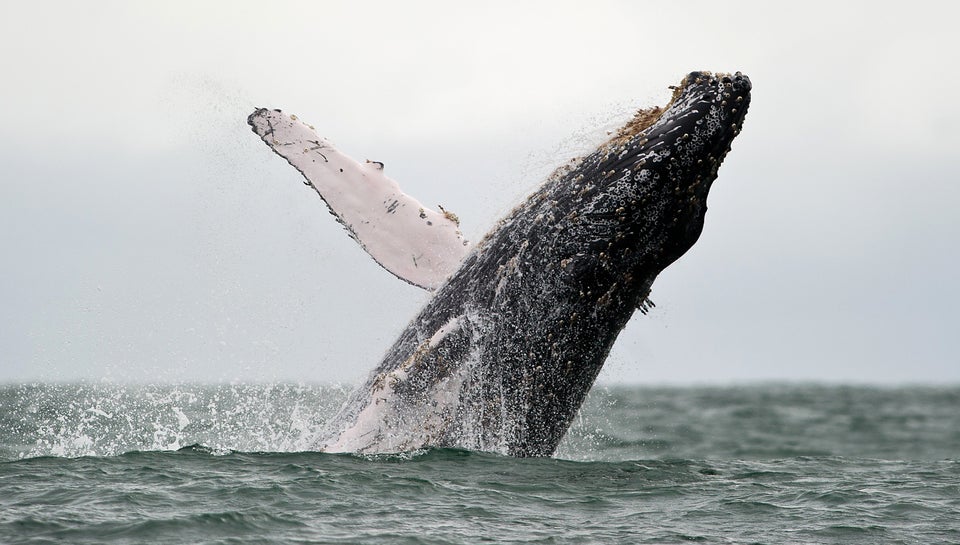It looks as though a miracle of nature has set free, at least for now, the pod of killer whales trapped in the ice in Hudson Bay, though we won’t know their ultimate fate until they are spotted again.
Shari L. Tarantino, President of the Board of Directors of the Orca Conservancy, spoke this morning by phone with the mayor of Inukjuak, Quebec, about 20 miles away from the breathing hole in the ice—where at least a dozen orcas have been stranded, captivating the world in a life-or-death drama.
“Last night there was a new moon, and the current in the water was activated and caused an opening all the way to open water,” the Mayor told Tarantino. “The whales are not trapped, and there is no new breathing hole. It is now up to them to survive, but they are indeed, gone.”
Nature, and the moon, may have spared these beautiful mammals, members of the dolphin family, from a terrifying death. But something strictly unnatural brought this predicament upon them. We may never know the ultimate fate of this particular pod, but we only have ourselves to blame for their ordeal.
These whales were mistakenly lured into Hudson Bay by the late and disturbingly warm winter that settled on North America this season.
Mammal-eating killer whales typically enter Hudson Bay in the summer months, when there is little or no ice and the waters are teeming with seals and beluga whales, their favorite prey (and a mainstay of the local Inuit population). The bay typically becomes choked with ice around late October, long after the orcas have cleared out, presumably through the Hudson Strait and south into less frigid waters.
But this year, the ice did not come for months. The whales, obviously, stayed too long, and when a cold snap arrived, they found themselves trapped in an ice-bound hell. Local residents said they had never before seen orcas in the bay during winter.
Everyone hopes the whales will make it safely to open waters, where the threat of a sudden freeze is less likely. But it is only a matter of time before this happens again (and it has happened before, in Japan in 2006, though those whales didn’t survive). Orcas are brilliant, but they don’t carry calendars. As long as there is no ice building up, and seals to eat, they will stay in the bay longer than they should.
In fact, more killer whales than ever before are visiting Hudson Bay and “recent declines in sea ice may be a major factor,” according to one Canadian study. Declining stocks of prey in the orcas’ normal wintering areas may be another factor.
The first killer whale ever reported in Hudson Bay showed up in the 1940s, and the number of sightings has skyrocketed in recent years.
As the report states, “From 1900-2004 ice concentration significantly declined in Hudson Strait,” and the dropping median ice concentration was tightly correlated (P ≤ 0.05) “with an increase in the number of killer whale sightings reported per decade.”
“The number of sightings has increased considerably in recent years, especially in western Hudson Bay. This increase is significantly related to a decline in sea ice in Hudson Strait, suggesting that declining ice cover has influenced killer whale movements and distribution,” the report says.
“This is supported by early suggestions (Degerbol and Freuchen 1935) that killer whales were stopped from entering Hudson Bay by ice conditions in Hudson Strait, in addition to Inuit traditional knowledge.”
Enough said. There are daffodils blooming up my street. In Brooklyn. On January 10. We don’t just need to save the whales; we need to save ourselves.
